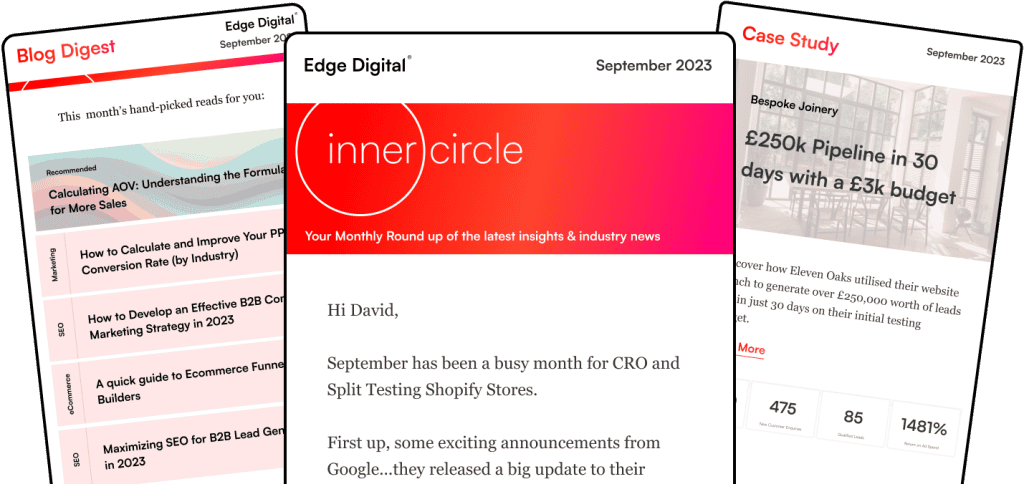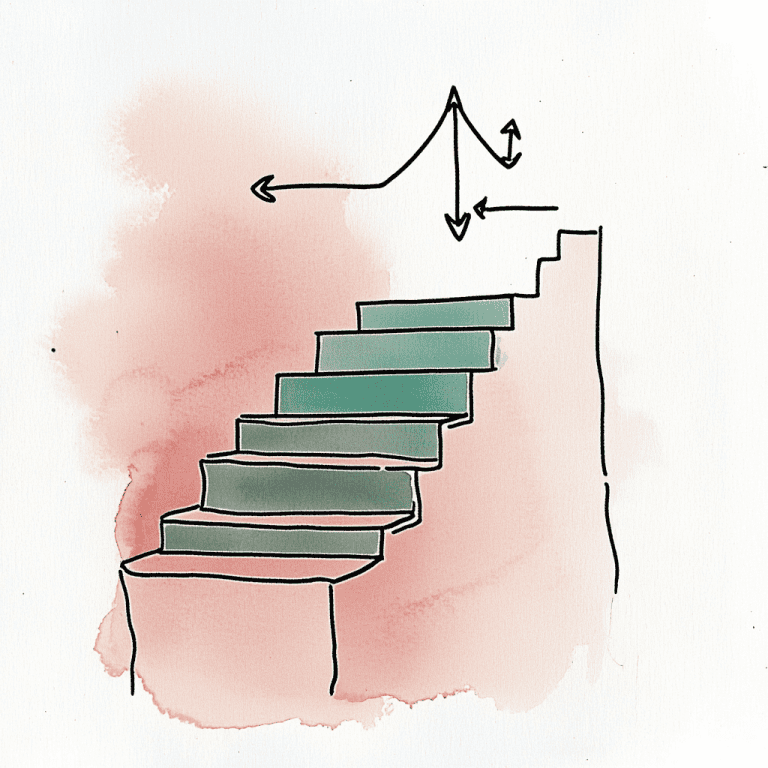YouTube advertising is a super effective way to reach new customers. But figuring out the costs can be a bit confusing when you’re just getting started.
YouTube ads usually cost between £0.008-£0.024 per view. So, reaching 100,000 viewers could run you about £800-£2,400. That’s pretty affordable compared to most advertising platforms.
The actual price depends on things like your target audience, ad format, and how competitive your industry is. YouTube uses an auction system, so you only pay when people interact with your ad.
This setup gives you a lot of control over your spending and helps you get the most out of your budget.
Let’s break down what you need to know about YouTube ad costs, from pricing models to budget strategies. Whether you’re running your first campaign or trying to get more from your ad spend, knowing these numbers will help you plan better.

Key Takeaways
- YouTube ads cost between £0.008-£0.024 per view, with daily budgets starting from £8.
- Different ad formats (skippable, non-skippable, bumper ads) have different costs.
- Your costs depend on targeting, bidding, and industry competition.
How Much Do YouTube Ads Cost in 2025?
YouTube advertising costs in 2025 are usually between £0.04 and £0.25 per view. Most businesses start with daily budgets as low as £8, and spend anywhere from £8 to £40 per day.
Average YouTube Ad Pricing
The cost of YouTube ads in 2025 depends on how you pay. Cost Per View (CPV) rates are usually £0.04 to £0.25, and Cost Per Click (CPC) ranges from £0.80 to £2.40.
Cost Per Thousand Impressions (CPM) is typically between £3.20 and £12.00. That’s pretty competitive with other digital platforms.
Pricing Model Breakdown:
- CPV: £0.04 – £0.25
- CPC: £0.80 – £2.40
- CPM: £3.20 – £12.00
- CPA: £8.00 – £40.00
TrueView skippable ads are the most affordable at £0.04 to £0.08 per view. Non-skippable ads cost more, around £8.00 to £16.00 CPM, since people have to watch the whole thing.
Typical Budget Ranges for Advertisers
Daily YouTube ad spending really depends on your business size and goals. Small businesses usually spend £400 to £1,600 per month.
Budget Ranges by Business Size:
| Business Type | Monthly Budget | Daily Spend |
|---|---|---|
| Small Business | £400 – £1,600 | £13 – £53 |
| Mid-sized Company | £2,400 – £8,000 | £80 – £267 |
| Enterprise | £8,000+ | £267+ |
Starting with at least £400 a month is a good idea to get enough data for testing and tweaking your ads.
Most campaigns need 2-4 weeks of testing before you’ll see the best results. Make sure your budget covers this learning period.
Overview of YouTube Ad Cost Metrics
YouTube ads use a few main pricing metrics. With CPV, you only pay if someone watches at least 30 seconds or interacts with your ad.
Key Performance Metrics:
- View Rate: How many people actually watch your ad
- Click-Through Rate: Clicks divided by impressions
- Cost Per Acquisition: Total spend divided by conversions
- Return on Ad Spend: How much revenue you make for every pound spent
CPM is best for brand awareness when you care about impressions, not clicks. CPC is better for campaigns focused on getting people to your website.
The YouTube ads cost breakdown shows that the more targeted your audience, the higher the cost. Broader audiences are cheaper per impression but might not convert as well.
Comparing YouTube Ad Costs to Other Platforms
YouTube is pretty affordable compared to other digital ad platforms. Platform comparison data shows YouTube’s CPM rates are usually 20-30% lower than Facebook video ads.
Platform Cost Comparison:
| Platform | Average CPM | Average CPC |
|---|---|---|
| YouTube | £3.20 – £12.00 | £0.80 – £2.40 |
| £4.00 – £15.00 | £1.20 – £3.00 | |
| £5.00 – £18.00 | £1.50 – £3.50 | |
| Google Ads | £2.00 – £20.00 | £1.00 – £4.00 |
YouTube’s video-first setup and huge reach make it a strong choice, especially for B2C brands looking to connect with people aged 18-44.
YouTube Ad Pricing Models Explained
YouTube has four main pricing models, each based on different user actions.
Cost Per View (CPV) Model
CPV is the most common way to pay for YouTube ads. You only get charged when someone watches your video for at least 30 seconds, or the whole thing if it’s shorter.
YouTube advertising costs typically range from $0.10 to $0.30 per view. This is great for building brand awareness and reaching lots of people.
Skippable video ads use CPV. If someone skips before 30 seconds, you don’t pay.
CPV works well if you want to:
- Get your brand out there
- Share more info about your product
- Tell your story
You’ll set a max bid for each view, and YouTube’s auction system decides your actual cost based on competition and targeting.
Cost Per Mille (CPM) Model
CPM means you pay for every 1,000 times your ad is shown, no matter if people watch the whole thing.
Most businesses pay between $4 and $25 per 1,000 impressions. Bumper ads and non-skippable ads use this model.
CPM is great if you want:
- Maximum reach
- To build brand awareness
- Short, punchy messages
Non-skippable ads cost about £4.80 per 1,000 impressions. Bumper ads are pricier at £8-16 per 1,000 since people have to watch them.
Cost Per Click (CPC) Model
CPC means you only pay when someone clicks your ad. It’s perfect for getting people to your website or landing page.
YouTube CPC rates typically range from £0.08 to £0.32 per click. In-feed video ads often use this model.
CPC works best for:
- Driving website traffic
- Collecting leads
- Promoting products
You’ll usually pay more per click than per view, but clicks are often more valuable since people are choosing to engage.
Cost Per Action (CPA) Model
CPA means you only pay when someone does something specific, like making a purchase or signing up.
CPA costs can vary a lot depending on your industry and the action you want. Buying something usually costs more than just signing up for a newsletter.
To use CPA, you’ll need:
- Conversion tracking set up
- Clear call-to-action buttons
- A landing page that’s ready to convert
TrueView for action ads use CPA. You set your target CPA, and YouTube tries to get you results at that price.
CPA is awesome for sales-focused campaigns since you only pay when you get real results.
Key Factors Influencing YouTube Advertising Cost
Several things affect how much you’ll pay for YouTube ads. Your targeting choices, industry competition, ad format, and timing all play a role.
Audience Targeting and Segmentation
The more specific you get with your targeting, the more you’ll probably pay. For example, targeting C-suite execs in California is pricier than targeting students in India.
Basic targeting (like age, gender, location) keeps costs down but is less precise.
Advanced targeting (like income, job title, interests, or custom audiences) usually costs more.
Where you target matters too. Ads in big cities like London cost more than rural areas. If you’re running international ads in the US or Germany, expect to pay more.
Device targeting affects price as well. Mobile-only campaigns are usually cheaper, while connected TV ads can be more expensive.
Industry and Competition
Your industry has a big impact on ad costs. Competitive industries drive up prices because more advertisers are bidding.
High-cost industries:
- Finance and insurance
- Legal services
- Tech and software
- Healthcare
Lower-cost industries:
- Entertainment and gaming
- Food and beverage
- Fashion and lifestyle
- Education
B2B ads usually cost more than B2C because the audiences are smaller and more valuable.
Competition also changes throughout the year. Busy times like Black Friday or Christmas mean higher ad costs.
If you’re new in a crowded market, expect to pay more. Brands with good performance history often get better rates.
Ad Formats and Placement
Your ad format affects your cost. Skippable video ads (CPV) give you the most control since you only pay when people actually watch.
Non-skippable ads are more expensive but guarantee full views. These are good for brand awareness.
Bumper ads are just 6 seconds and use CPM pricing. They’re great for quick messages but usually require a bigger budget.
Discovery ads show up in search results and related videos. They can be cheaper since people choose to watch them.
Where your ad appears matters too. Premium spots, like pre-rolls on popular channels, cost more than sidebar placements. Homepage takeovers are the priciest option on YouTube.
Timing and Seasonality
When you run your YouTube ad campaign can really change your costs. Good timing saves money, while bad timing makes things pricier.
Peak seasons drive up competition and costs:
- November-December (holiday shopping)
- January (New Year resolutions)
- September (back-to-school)
- Spring (tax season and home improvement)
Off-peak periods offer better value:
- Mid-January through February
- Late summer months
- Post-holiday periods in early January
Daily timing matters too. Business hours usually cost more for B2B campaigns, while evenings and weekends work better for consumer products.
Mondays to Wednesdays often have better rates than Thursdays and Fridays, when weekend shopping campaigns pick up. If you can, try to spend more of your budget early in the month instead of scrambling at the end.
Types of YouTube Ads and Their Impact on Cost

YouTube ad formats vary in cost depending on how they engage viewers. TrueView ads cost between £0.04-£0.08 per view, while non-skippable ads range from £8-£16 per 1,000 impressions.
Skippable In-Stream Ads
Skippable in-stream ads are great if you’re on a budget. You only pay when someone watches at least 30 seconds or interacts with your ad.
These ads show up before, during, or after videos, and viewers can skip after five seconds. That means you’re only charged for people who actually stick around.
- Cost per view (CPV): £0.04-£0.08
- Monthly budget range: £400-£4,000
- Minimum watch time for billing: 30 seconds
This format works well for brand awareness. You can make longer ads without worrying about paying for people who aren’t interested.
Non-Skippable In-Stream Ads
Non-skippable in-stream ads make sure your message is seen, but they cost more. These ads last 15-20 seconds and viewers have to watch the whole thing before their video.
You pay based on impressions, not views. CPM ranges from £8-£16 for every 1,000 views.
Pricing Details:
- CPM range: £8-£16 per 1,000 impressions
- Campaign budgets: £800-£8,000
- Maximum duration: 20 seconds
This format is best if you need your full message delivered, like for product launches or big calls-to-action.
Bumper Ads
Bumper ads are short, six-second non-skippable ads that pack a punch. They’re cheaper than longer formats but still guarantee your ad is seen.
Bumper ads typically cost £4-£8 per 1,000 impressions. Production is simple and viewers don’t get too annoyed.
Investment Requirements:
- CPM rates: £4-£8 per 1,000 impressions
- Campaign budgets: £400-£2,400
- Fixed duration: 6 seconds maximum
Six seconds isn’t long, so your message has to be concise and memorable. This often leads to more creative ads.
Bumper ads are perfect for quick brand reminders or product announcements. You can also run multiple versions to see what works best.
Discovery and Overlay Ads
Discovery ads show up in YouTube search results and next to related videos. You pay only when someone clicks, so it’s a bit more controlled.
Overlay ads are semi-transparent banners that appear over videos. They’re a budget-friendly way to get your brand out there.
Cost Breakdown:
| Ad Type | Pricing Model | Average Cost |
|---|---|---|
| Discovery | CPC | £0.80-£2.40 |
| Overlay | CPC | £0.80-£2.40 |
Discovery ads need eye-catching thumbnails and titles. You’re competing with regular video content, so make it count.
Overlay ads are less intrusive, but people might ignore them more easily. Still, you only pay for clicks, so you stay in control of your spending.
Setting and Managing Your YouTube Advertising Budget
Managing your budget well helps you get the most out of your YouTube ads. Smart bidding and clear goals keep your spending on track.
Establishing Daily and Campaign Budgets
Figure out your daily and total campaign budgets before you start. Most businesses spend between £8-£40 per day on YouTube ads.
If you’re just starting out, try £10-£15 per day to test things out. You can always bump it up once you see what works.
Daily Budget Considerations:
- New campaigns: £10-£20 per day
- Established campaigns: £30-£100+ per day
- Seasonal promos: 2-3x your usual daily spend
For a typical campaign, small businesses might spend £300-£500 over a month. Aim to put 6%-30% of your total ad budget into YouTube, depending on your audience and goals.
Keep an eye on spending, especially in the first week, and tweak as needed.
Adjusting Bid Strategies for Cost Efficiency
Your bidding strategy decides how much you pay and where your ads show up. You can choose Cost Per View (CPV) or Cost Per Thousand Impressions (CPM).
CPV bidding costs between £0.02-£0.25 per view when someone watches at least 30 seconds. This is good if you want more engagement.
Bid Optimisation Tips:
- Don’t bid too high: You’ll burn through your budget fast.
- Don’t bid too low: Your ads might not get seen.
- Start in the middle: Adjust as you see results.
CPM bidding is usually £3-£8 per 1,000 impressions. This works better for brand awareness.
Check your click-through rates and view-through rates every week. If things dip, try upping your bid or changing your targeting.
Budget Planning for Different Ad Objectives
Your campaign goals affect how you budget. Brand awareness campaigns usually use CPM bidding with higher daily budgets.
Lead Generation Campaigns:
- Budget: £20-£50 daily
- Focus: Cost per conversion
- Timeline: 2-4 weeks minimum
Brand Awareness Campaigns:
- Budget: £30-£100 daily
- Focus: Maximum reach and impressions
- Timeline: 4-8 weeks
For sales-focused campaigns, go with CPV bidding and enable conversion tracking. Expect to spend £300-£800 to reach about 100,000 viewers.
Product launches need a bigger push up front. Put about 60% of your budget into the first two weeks to build momentum.
Seasonal Campaign Budgets:
- Increase budgets by 50-100% during busy seasons
- Book premium placements like Masthead ads early
- Scale back during quieter periods
If your cost per view is over £0.30, consider changing your targeting.
Maximising ROI and Performance Monitoring
To get the most from your YouTube ads, track the right stuff and make changes based on data. Focus on click-through rates, conversions, and your overall return on ad spend.
Tracking Key Ad Metrics (CTR, Conversion Rate)
CTR (click-through rate) shows how many people click your ad out of everyone who sees it. A good YouTube CTR is usually between 0.5% and 2%.
If your CTR is low, your ad might need a better thumbnail, headline, or call-to-action. Try different versions to see what works.
Conversion rate tells you how many clicks turn into sales or leads. Set up conversion tracking in Google Ads or Google Analytics.
Track things like purchases, sign-ups, or downloads to see which ads drive real results. View-through rate shows how many people watch your whole ad, which helps with brand awareness.
Check these numbers weekly to spot trends early. Performance tracking tools can give you even more insight into how people behave after clicking.
Optimising Campaigns for Lower Cost
Start with tight audience targeting to avoid wasting money. Focus on the demographics, interests, and behaviours that match your best customers.
Your bid strategy matters. Try Target CPA bidding if you know your conversion values, or Maximise Conversions if you’re just starting out.
Test different ad formats to see what’s most cost-effective. Skippable in-stream ads are often a good bet since you only pay for views from interested people.
Schedule your ads for times when your audience is most active. Use analytics to figure this out and adjust your ad schedule.
Add negative keywords to stop your ads from showing up in irrelevant searches. This keeps unqualified clicks down and your costs lower.
A/B test your creative regularly. Even small tweaks to your thumbnail or copy can make a big difference.
Measuring Return on Ad Spend (ROAS)
ROAS (Return on Ad Spend) tells you how much revenue you make for every pound you spend. Just divide your total revenue by your ad spend.
A ROAS of 4:1 means you get £4 back for every £1 spent. Most businesses shoot for at least 3:1, but it depends on your industry and margins.
Remember, YouTube ads can influence purchases days or weeks later, so use a 30-day view-through window for accurate tracking.
Look at both direct and assisted conversions. Sometimes YouTube introduces people to your brand, but they buy later through another channel.
Lifetime value is also important—think about what customers spend over time, not just their first purchase.
Use Google Analytics to see how YouTube affects your whole marketing funnel. People might see your ad, then search for you or find you on social before buying.
Frequently Asked Questions
YouTube ads usually cost between £0.02 and £0.25 per view, but lots of things can change that. Knowing how bidding, targeting, and budgets work helps you plan smarter campaigns.
What factors influence the pricing of advertisements on YouTube?
A few things decide how much you pay for YouTube ads. Your target audience is a big one.
Targeting specific demographics like age, location, or interests can raise costs, especially if you’re after business execs. Industries like finance and law pay more due to high demand.
Ad quality matters too. YouTube gives better placement and lower prices to engaging ads.
Seasonal timing also plays a role. Costs go up around major holidays like Christmas.
Can you explain the bidding process for YouTube ad space?
YouTube uses an auction for ad placement. You set a max bid for what you’ll pay per view or impression.
Your bid, ad quality, and relevance all factor into where your ad appears. Sometimes, a better ad wins even with a lower bid.
You only pay when someone watches 30 seconds or interacts with your ad (that’s CPV—Cost Per View). This keeps you from paying for viewers who skip.
Costs change throughout the day as more advertisers compete during busy hours.
How does the cost of YouTube advertising compare to traditional television ads?
YouTube ads are way cheaper than TV. TV spots can cost thousands for just 30 seconds during prime time.
YouTube ads average between £3 and £8 per 1,000 impressions, so small businesses can get in the game. TV usually needs a huge upfront spend.
YouTube also lets you target more precisely. You won’t pay for people outside your audience.
Plus, you can track everything in real-time—views, clicks, and conversions—which TV just can’t offer.
What is the average spend for businesses running YouTube advertising campaigns?
Small businesses usually spend between £500 and £2,000 a month on YouTube ads. Medium-sized companies tend to set aside £2,000 to £10,000 monthly.
Most advertisers choose daily budgets from £20 up to £200. If you’re just testing things out, you can start with as little as £30 to £150 per day.
Big enterprise companies sometimes spend £20,000 or more each month, especially if they want to reach a huge audience or get super specific with their targeting.
Short campaigns, like promos running for a couple of weeks, often use a more concentrated budget.
How can targeting options affect the cost of YouTube ads?
The more precise your targeting, the higher the cost—but your ads will likely be more effective. If you go broader, you’ll usually pay less per view, but you might not get as many conversions.
Targeting by location can make a big difference. For example, ads aimed at London are pricier than those for smaller UK cities.
Age and gender matter, too. Ads for younger people (18-34) often cost less than those targeting older, higher-income groups.
Targeting by interests, especially niche ones like luxury goods, can get expensive since there’s less ad space available.
If you use custom audiences, like your website visitors or email list, expect to pay more—but these folks are usually more likely to convert.
Is there a minimum budget requirement for advertising on YouTube?
YouTube doesn’t enforce a strict minimum budget requirement. You can start campaigns with as little as £1 per day.
Most advertising experts recommend daily budgets of at least £10-20 for meaningful results. Lower budgets might not generate enough data for optimisation.
For campaign testing, it’s a good idea to set aside £100-300 total spend per ad variation. This helps you get reliable data.
Some ad formats, like Masthead ads, need much higher budgets and require direct negotiation with Google.
Depending on your industry and competition, you might need to spend more to stand out. Competitive sectors usually need bigger budgets to get noticed.



